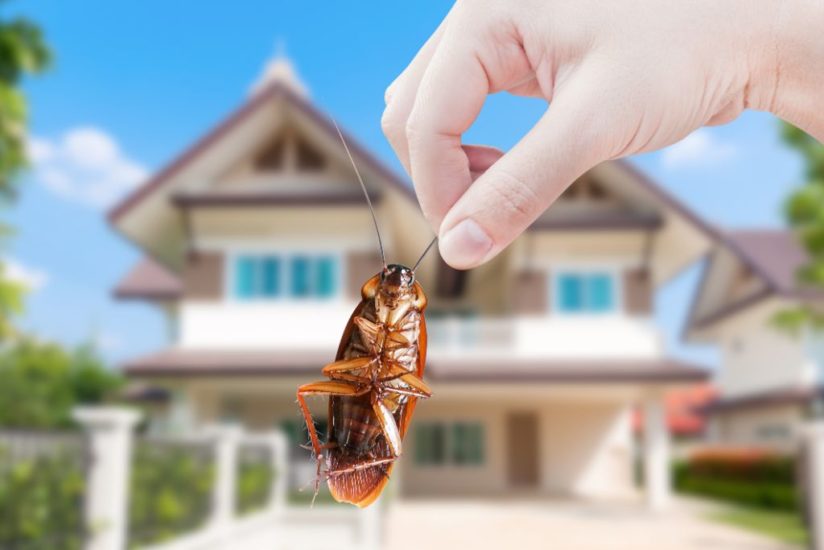Pestwise for Dummies
Pestwise for Dummies
Blog Article
The 4-Minute Rule for Pestwise
Table of ContentsSome Ideas on Pestwise You Should KnowHow Pestwise can Save You Time, Stress, and Money.The smart Trick of Pestwise That Nobody is Talking AboutPestwise for DummiesPestwise - The FactsThe 5-Second Trick For PestwiseThe Definitive Guide to Pestwise

Q. Define "integrated parasite administration" (IPM) and list numerous possible control methods that might be utilized in an IPM strategy. A. Integrated parasite administration is the combining of appropriate bug control strategies into a single plan to lower parasites and their damages to an appropriate level. Bug control tactics might include: host resistance, biological control, social control, mechanical control, sanitation, and chemical (chemical) control.
Some Of Pestwise
What can you do to maintain the pests you are attempting to control from becoming immune to the pesticides you utilize? A. Parasite resistance can be reduced by utilizing incorporated pest administration and turning the kinds of pesticides utilized.
Bugs are a crucial threat to the farming service, and incorporated pest management helps growers address and reduce these dangers. Integrated bug management makes use of several methods in complex, thus being a more effective option to the problem. Pest Control. Specifically, getting rid of hostile chemical methods allows for reducing damage to people and the environment by using all-natural and more secure choices instead
Getting The Pestwise To Work
The objective of integrated insect management is to minimize this injury and control acceptable problem levels as opposed to remove all undesired populaces. This is why it is necessary to comprehend what measures are warranted in each case and usage aggressive ones just when other incorporated management strategies don't function. Integrated management minimizes the adverse consequences of a non-IPM approach, and the primary benefits of IPM Benefits of IPM.
A right understanding of the invasion scope figures out if the issue should be addressed. are the following elements of an IPM program because it is important to realize if the microorganisms make potential risks and pick the incorporated administration options or the certain chemical use. intend to reduce invasions by using different agronomic techniques.
Pestwise Can Be Fun For Anyone
Integrated management options in an IPM program start with safer to more aggressive ones. The above-mentioned incorporated monitoring aspects help comprehend exactly how to intend and carry out an IPM program action by action: Monitor your plants regularly.

Amongst others, IPM cultural techniques consist of the following field monitoring techniques: dirt treatment; option of appropriate plants; crop turning; interplanting or strip cropping; selection of planting days; weed control; use of trap plants. Favorable dirt conditions speed up plant growth, and strenuous plants are much more immune to invasions. Healthy and balanced seedlings and seeds determine successful crop growth, so it is essential to pick pest-free growing product with strong origins.
Therefore, to name a few applications, crop rotation can be properly used as an integrated insect monitoring approach. Pests spread slower if rows of different crop types separate their host plants in intercropping or strip cropping, which is likewise utilized in the integrated bug administration system. Alternatively, problems raise when plants of the same plant kind or family members expand together.
In a similar way, potato beetles can damage expanding potatoes, in addition to tomatoes. Planting trap plants in patches is another option for IPM intercropping. This incorporated parasite monitoring approach recommends bring in parasites to specific plants and after that managing them with chemical or mechanical methods. Particularly, you can expand soybeans as catch crops for Japanese beetles.
How Pestwise can Save You Time, Stress, and Money.
Barriers are regular examples of physical IPM methods. Fully grown insects or their eggs and larvae are accumulated by hand and destroyed.

Division of Plant Sciences. College of Missouri. Soil solarization is a reliable integrated administration method to sanitize the field by warming it in a natural method. This integrated monitoring technique indicates an usual way of damaging view publisher site pests by killers, parasitoids, microorganisms, and other biological control representatives (also known as antagonistic microorganisms). The duty of organic control in IPM is to.
The Facts About Pestwise Uncovered
With time, their population turned out to be a real nuisance to farmers alongside aboriginal kangaroos or dingoes. The walking cane toad is one more case illustrating incorporated organic control failure in this regard when it rejected to quest the target types and ended up being a pest itself. Parasitoids create on or within their hosts to ultimately kill them after maturing.
Report this page